- News
- Reviews
- Bikes
- Accessories
- Accessories - misc
- Computer mounts
- Bags
- Bar ends
- Bike bags & cases
- Bottle cages
- Bottles
- Cameras
- Car racks
- Child seats
- Computers
- Glasses
- GPS units
- Helmets
- Lights - front
- Lights - rear
- Lights - sets
- Locks
- Mirrors
- Mudguards
- Racks
- Pumps & CO2 inflators
- Puncture kits
- Reflectives
- Smart watches
- Stands and racks
- Trailers
- Clothing
- Components
- Bar tape & grips
- Bottom brackets
- Brake & gear cables
- Brake & STI levers
- Brake pads & spares
- Brakes
- Cassettes & freewheels
- Chains
- Chainsets & chainrings
- Derailleurs - front
- Derailleurs - rear
- Forks
- Gear levers & shifters
- Groupsets
- Handlebars & extensions
- Headsets
- Hubs
- Inner tubes
- Pedals
- Quick releases & skewers
- Saddles
- Seatposts
- Stems
- Wheels
- Tyres
- Health, fitness and nutrition
- Tools and workshop
- Miscellaneous
- Tubeless valves
- Buyers Guides
- Features
- Forum
- Recommends
- Podcast
TECH NEWS
Tour Tech 2017: Time trial bikes - the bikes built for racing against the clock
The 2017 Tour de France kicked off with a 14km time trial around the streets of Dusseldorf, putting the most radical looking bikes centre stage. Time trial bikes are the fighter jets of the road bike world, they’re built purely for going fast and make no concession to comfort.
The UCI rules are fairly restrictive for designers but that doesn’t stop there being different interpretations of those rules, and the result is a wide variety of equipment on display. If you’re wondering what the key differences between a time trial bike and a regular road bike are, we put together this video outlining the main changes.
Time trial bikes of the Tour de France
Now you know the differences between a time trial and a road bike, let's take a closer look at the time trial bikes that were used last Saturday.
Now sponsoring the French Ag2r-La Mondiale team, Factor was originally a company launched BERU F1 Systems and is now owned by ex-pros Baden Cooke and Rob Gitelis. It recently launched its first time trial bike, the Slick pictured above, and is novel in that it uses a split down tube - we’ve seen this before on an Eddy Merckx time trial bike a few years ago. More regular features are the wide stance fork blades and brakes integrated into the fork and frame.
The Ag2r-La Mondiale specs the Slick with a Shimano Dura-Ace Di2 groupset, SRM power meter and CeramicSpeed’s unusual oversized pulley wheel in the rear mech, claimed to save 2.5W over a standard pulley wheel. Wheels are Mavic, a disc out back and deep section spoked wheel up front.
Astana’s Argon 18 E-118 Next time trial bike, the Canadian company’s flagship bike for racing against the clock. They reckon that it is 5% to 20% more aerodynamically efficient than its predecessor, the E-114, depending on the angle of the wind.
The team build the Argon 18 frames with Corima wheels, a disc at the back and a deep section at the front, but some bikes had a tri-spoke front wheel instead. Rest of the equipment is Shimano Dura-Ace Di2 and FSA cranks, with a time trial chainring, and stubby Prologo saddles.
Dimension-Data’s Cervelo P5. Massive aero shaped tubes with the seatpost extended beyond the rear stays to manage the airflow at the back of the frame, while there’s a regular front brake caliper instead of the more complicated integrated brakes we’re used to seeing on time trial bikes.
More Shimano Dura-Ace Di2 complemented by Rotor cranks and CeramicSpeed’s oversized rear pulley wheel.
The team is sponsored by Enve and most of the bikes we saw racked up before the stage had Enve front wheels, but unusually HED rear disc wheels. It’s not unusual to see non-sponsor equipment, though it’s increasingly rare, the reason here is simply that the company doesn’t make a disc rear wheel for time trials.
Team Sunweb is sponsored by Giant Bicycles and uses the Trinity Advanced SL. It’s been around for a number of years now but despite its age it still looks cutting-edge. The front brake is shielded by the fork while the rear brakes is underneath the chainstay, the seat tube is very skinny and snakes close to the rear wheel, and the stem sits flush with the top tube.
Shimano Dura-Ace Di2 with a 58t chainring, Pioneer power meter, PRO disc wheel and tri-spoke front wheel, and Giant’s own computer for measuring speed and power output.
Fortuneo–Oscaro’s Look 796 Monoblade was introduced at the Tour de France, under camouflage, two years ago and brings some interesting details to the time trial category. The front brake is actually embedded within the fork and all cables and wires are completely concealed within the frame, with the cables and wires through the proprietary handlebar and into the stem. It’s helped that the team is using SRAM’s wireless eTap groupset.
The eTap groupset provides the ability to add Blips, additional wireless gear shift buttons, anywhere on the handlebar you want them.
This bike has them at the end of the extensions and also on the base bars next to the brake levers, very simply clamped over the bar tape.
Team Sky is riding Pinarello’s Bollide once again this year, and there’s really no change from last year or the year before. Here’s Chris Froome’s 2015 bike which as you can see is very similar to the bike he’s riding in the 2017 Tour de France.
Froome’s bike is, of course, decked out with the latest Shimano Dura-Ace Di2, but with is favoured O.Symetric chainrings. The unique MOST handlebar, previously a 3D printed component customised exactly for Froome, is still used, with grip tape added to the extensions around the Di2 satellite shifters.
The Specialized Shiv, here belonging to the Quick-Step Floors Cycling Team, is one of the older time trial bikes in use, but it doesn’t look out of date at all. The Shiv has actually been in Specialized’s range since 2010, but despite its age still looks very modern. And fast.
A key feature of the Shiv, and most modern time trial bikes these days is the stem being integrated into the top tube, so it creates a smoother and lower profile front-end. That’s all about reducing frontal surface area, and decreasing the drag figure.
This one belongs to Matteo Trentin and it’s built up with Shimano Dura-Ace Di2 and Roval front wheel and, as Roval doesn’t offer a disc rear wheel, that looks a bit like a Mavic Comete disc wheel to us, but we could be wrong. If you think you know do let us know in the comments section.
Bora-Hansgrohe is also using the Specialized Shiv, with a largely identical build, including Shimano Dura-Ace Di2, but with a few key differences. The biggest is the wheels, which as you can see here include a PRO tri-spoke front wheel and a plain black disc wheel.
Now, it could be a PRO disc wheel, they do make one with the stickers removed, but it also looks suspiciously like a Mavic Comete.
Here is a Shiv being prepped, and it mixes new and old Dura-Ace and has a PRO Disc rear wheel.
Wanty–Groupe Gobert is a small team that got a wildcard into this year’s Tour and is sponsored by German brand with a big presence in the UK, Cube Bicycles. The Aerium C:68 SL Hadron time trial bike was introduced last year and follows most of the usual design cues of current TT bikes, such as the integrated stem, a front brake sitting flush with the fork, the rear brake under the chainstays, and deep head tube and seat tube junctions. The team uses Shimano Dura-Ace Di2 with Fulcrum wheels and Continental tyres.
This is Andre Greipel’s Ridley Dean time trial bike, and perhaps the most unusual feature is the slit in the fork blades, intended to reduce drag. It’s used on the Belgian company’s Noah aero road bike with good success. Also integrated into the fork is a mini V-brake, probably the neatest fork and front brake design we’ve seen on a TT bike.
Trek’s Speed Concept time trial bike follows the same design lines as the other TT bikes here, with a fork that extends over the front of the head tube and forms the stem, which is flat with the top tube.
It's equipped with this unusual one-piece extension bar. As you can see it allows a wide range of reach adjustment but the width is a little more constrained. The base bar and extension bars are integrated to the stem, which is effectively mounted to the top of the fork, and behind it, the Di2 junction box is fixed.
This bike, being prepped ahead of the opening time trial, was built with a mix of old and new Shimano Dura-Ace Di2.
More tech from the Tour de France soon...
David worked on the road.cc tech team from 2012-2020. Previously he was editor of Bikemagic.com and before that staff writer at RCUK. He's a seasoned cyclist of all disciplines, from road to mountain biking, touring to cyclo-cross, he only wishes he had time to ride them all. He's mildly competitive, though he'll never admit it, and is a frequent road racer but is too lazy to do really well. He currently resides in the Cotswolds, and you can now find him over on his own YouTube channel David Arthur - Just Ride Bikes.
Latest Comments
- Gbjbanjs 4 hours 19 min ago
Glad to see so many with similar values to my own. BC completely misreading and continuing to ignore members.
- festina 6 hours 54 min ago
I kinda like the look.
- Velo-drone 7 hours 32 min ago
I don't think it is peculiarly Dutch even. I've travelled all over Europe for work, and I'd say that the popularity of this style of bike is much...
- hawkinspeter 7 hours 36 min ago
They most certainly do "separate like that"....
- nick h. 10 hours 19 min ago
Read it again. You seem to have missed what this is all about.
- Secret_squirrel 13 hours 21 min ago
Thanks Neil!
- slc 13 hours 27 min ago
All arguments I am hopeful to see validated, especially (a) and (b) combined....
- hawkinspeter 14 hours 1 min ago
Well, on Lundy the only predators are the humans, and they're far more likely to buy some farmed non-Soay lamb from the pub than try to chase a...
- mdavidford 14 hours 1 min ago
"Just a little bit off the sides"
- mdavidford 14 hours 3 min ago
Given that one of the Oxfordshire councillors took the time to drop into the comments section of the previous article on this story to deny, at...


















































































































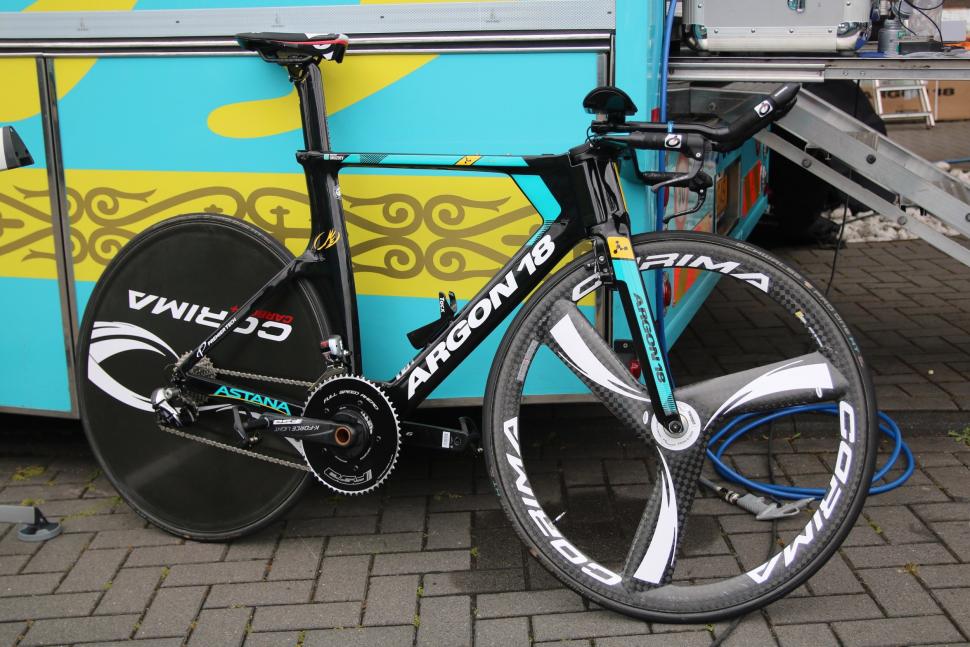



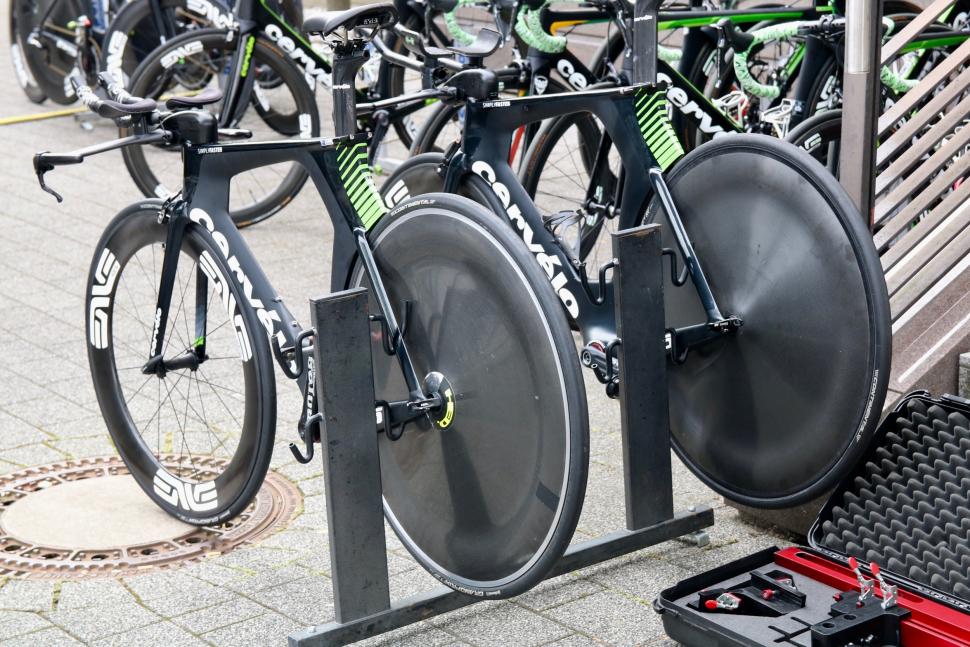
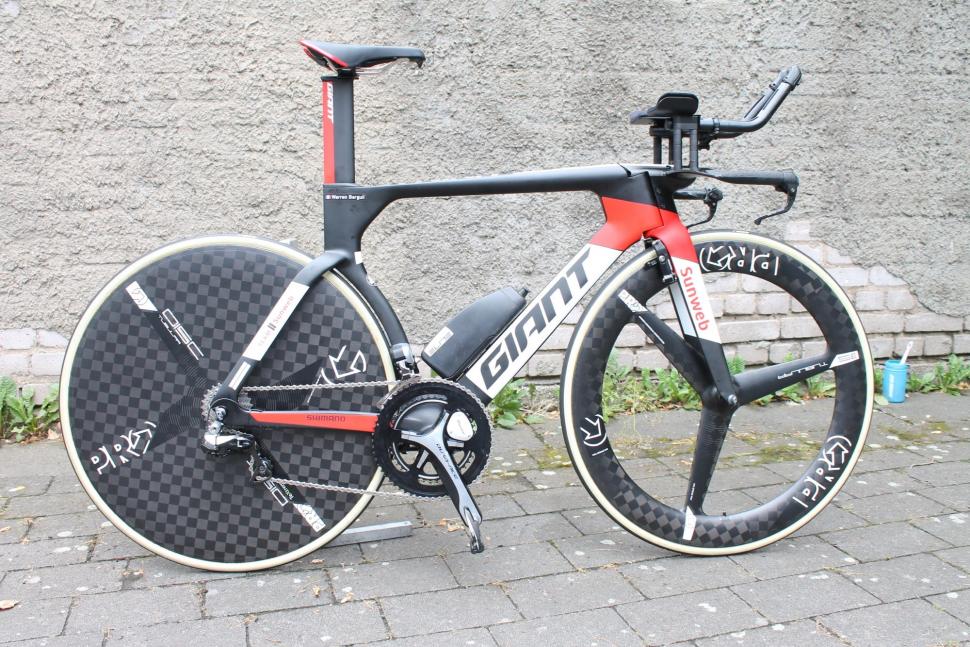

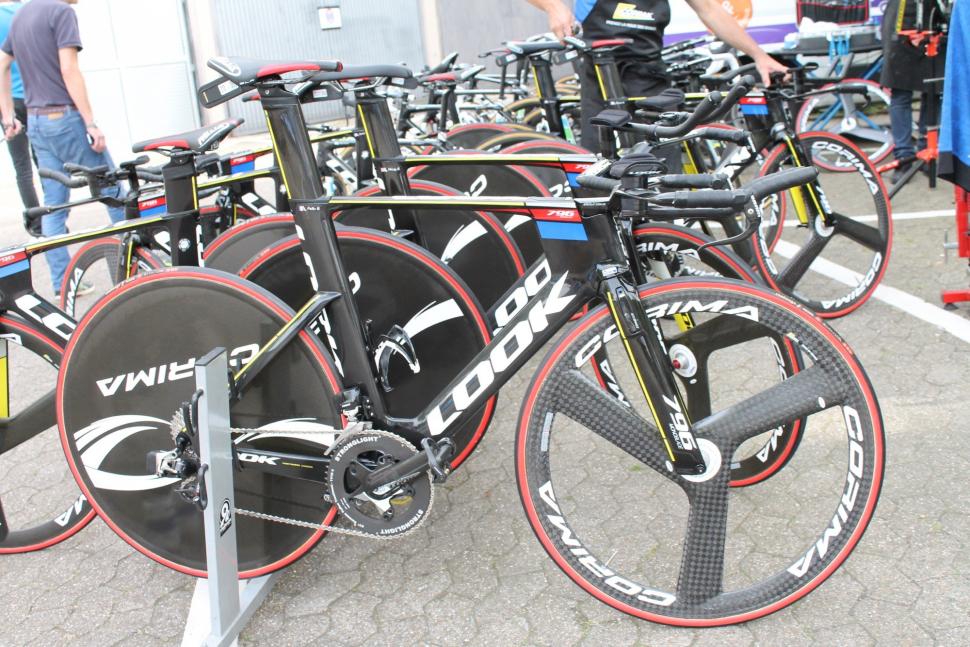
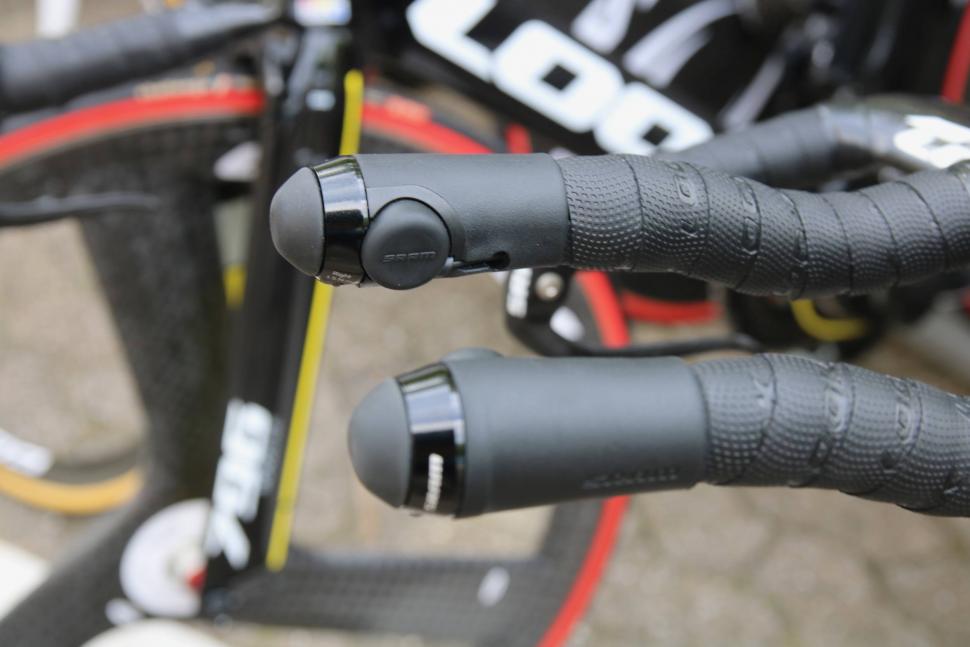
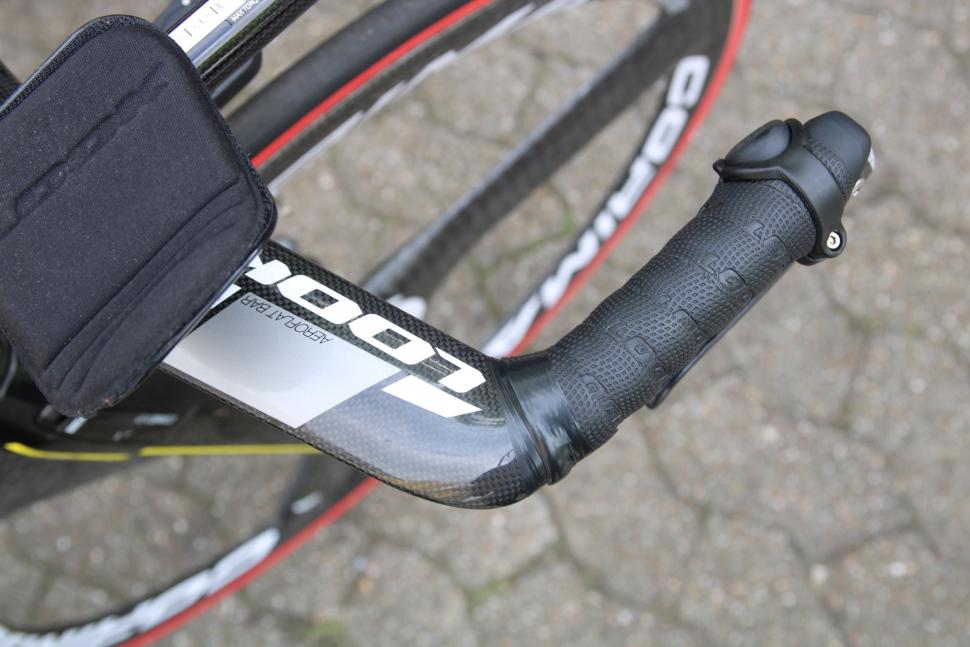
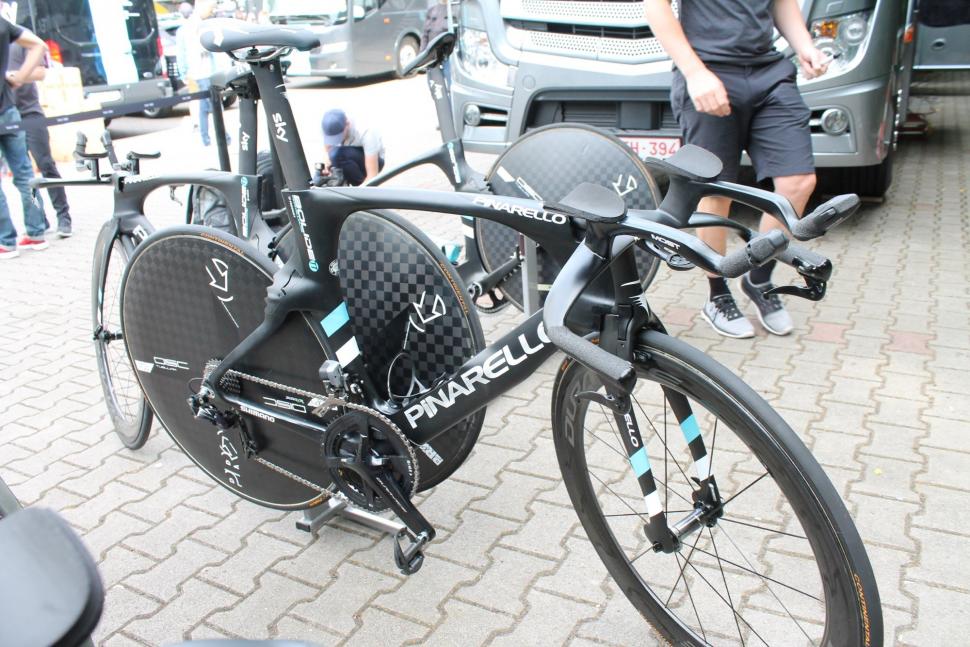
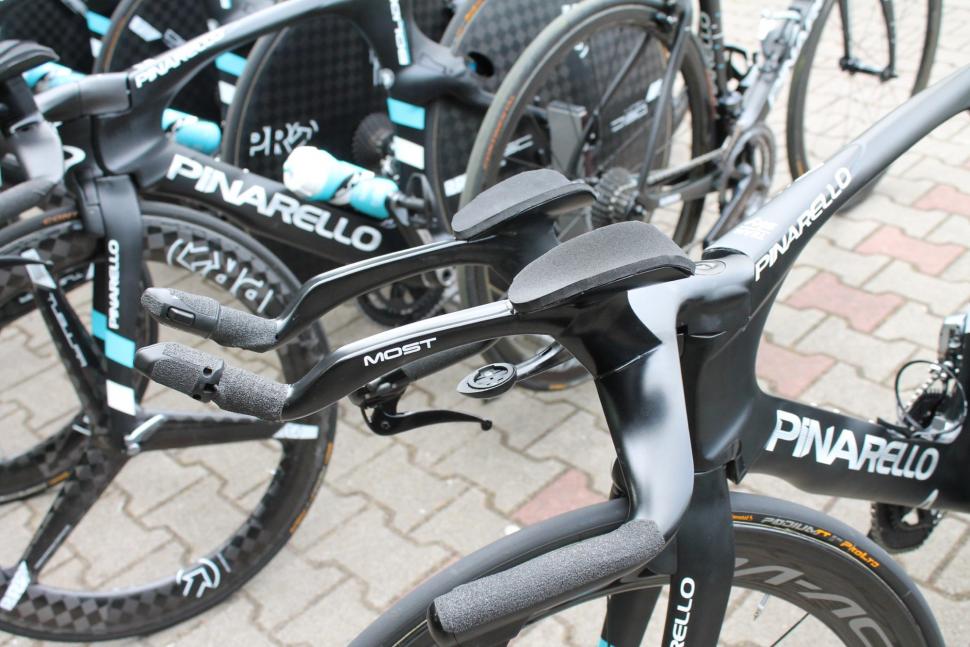
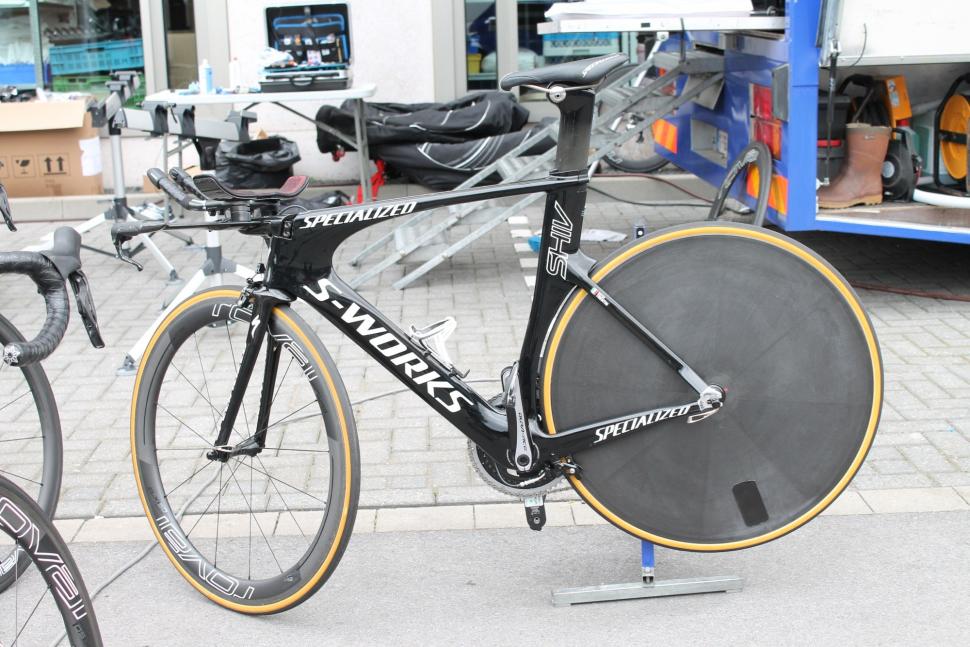
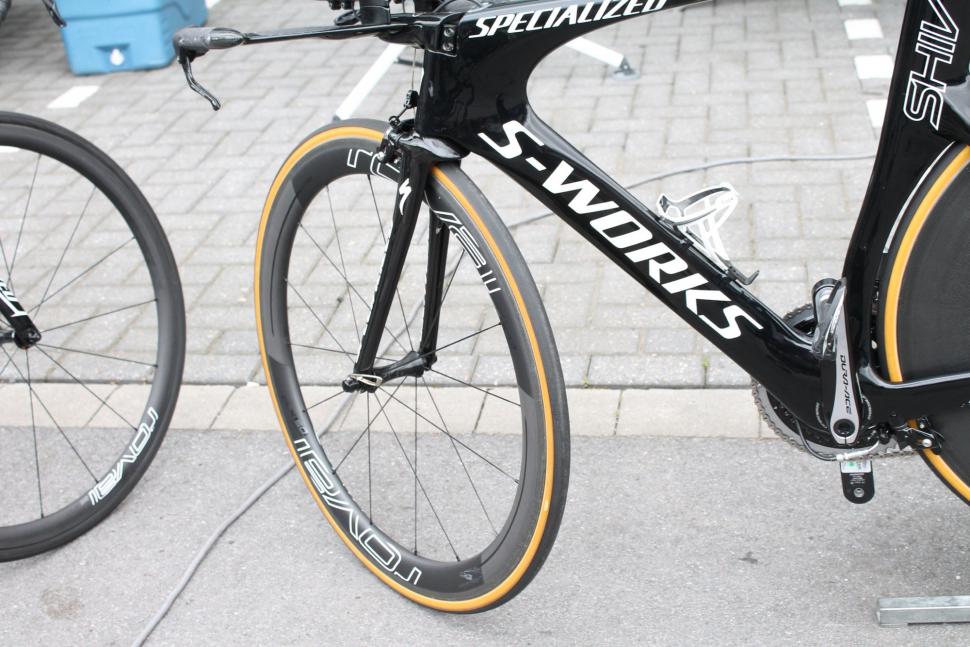

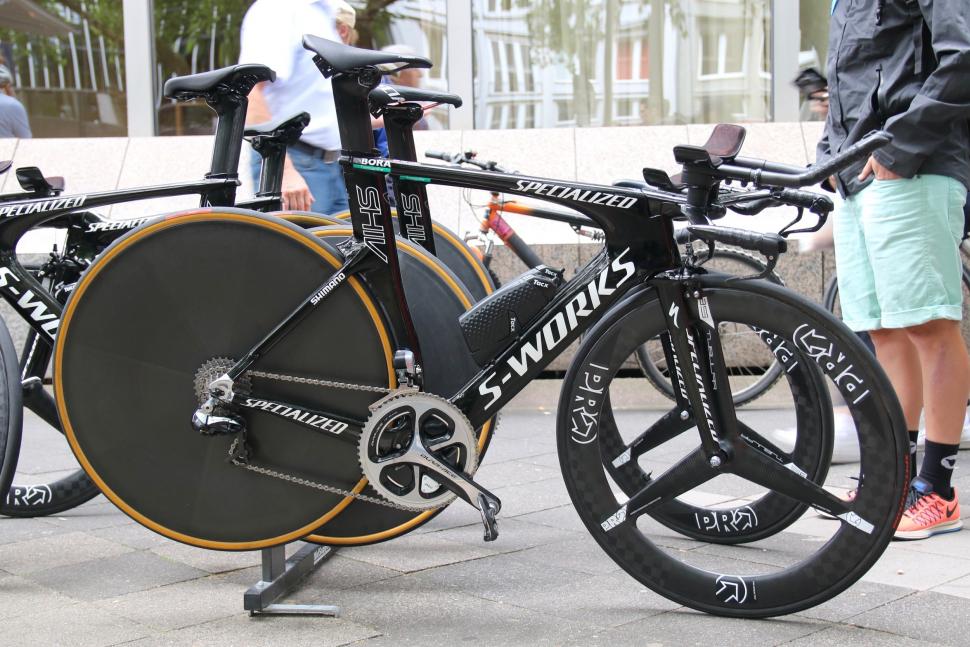

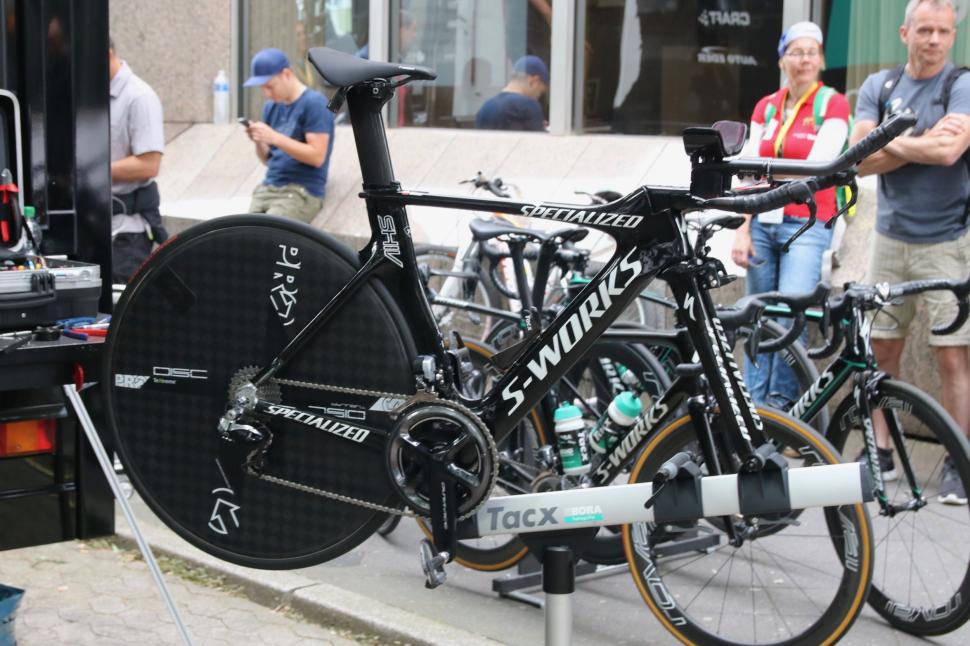

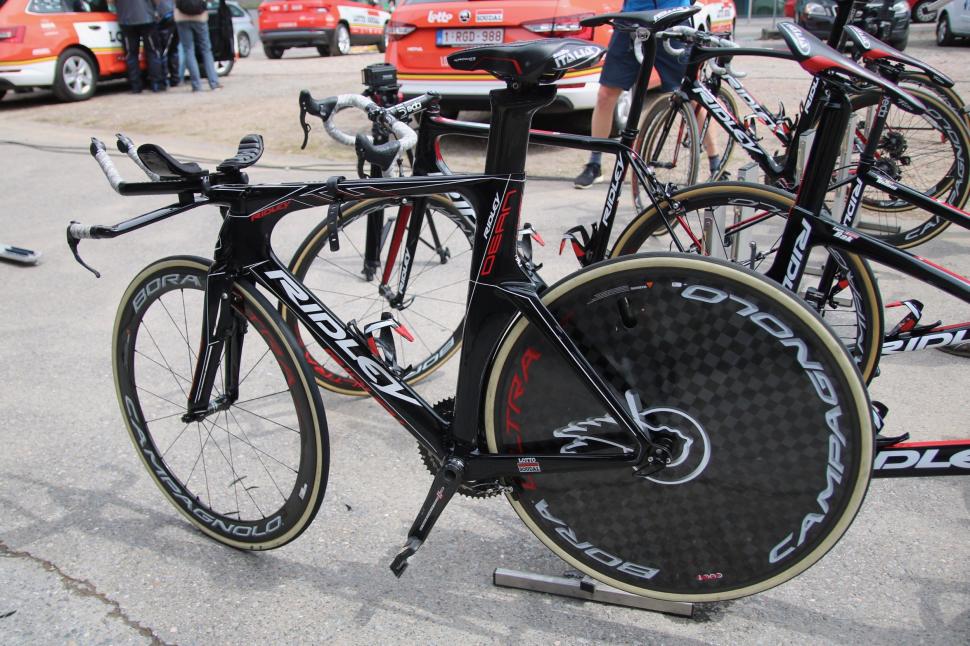
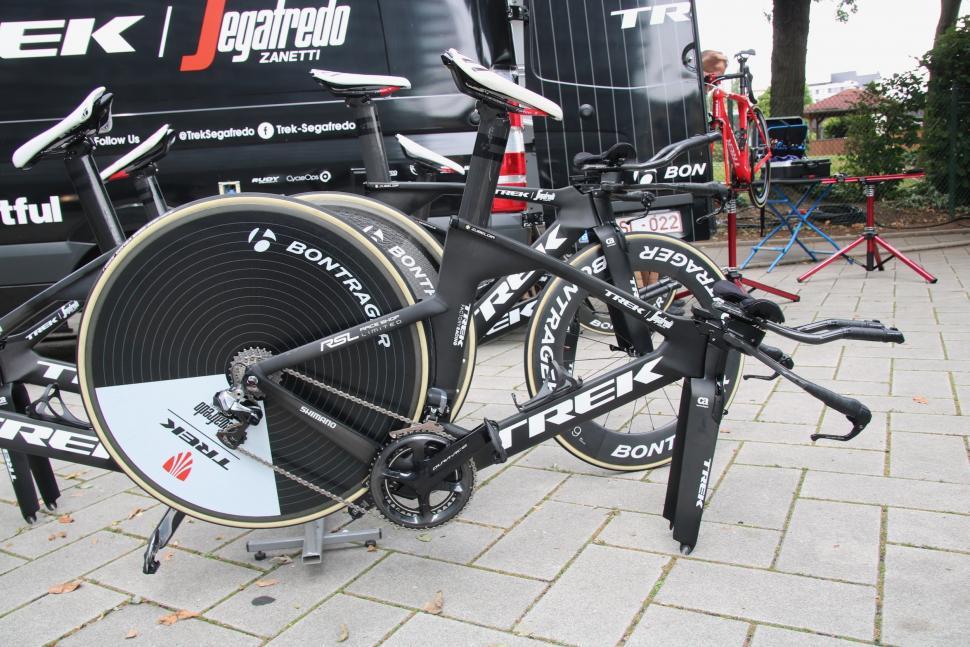
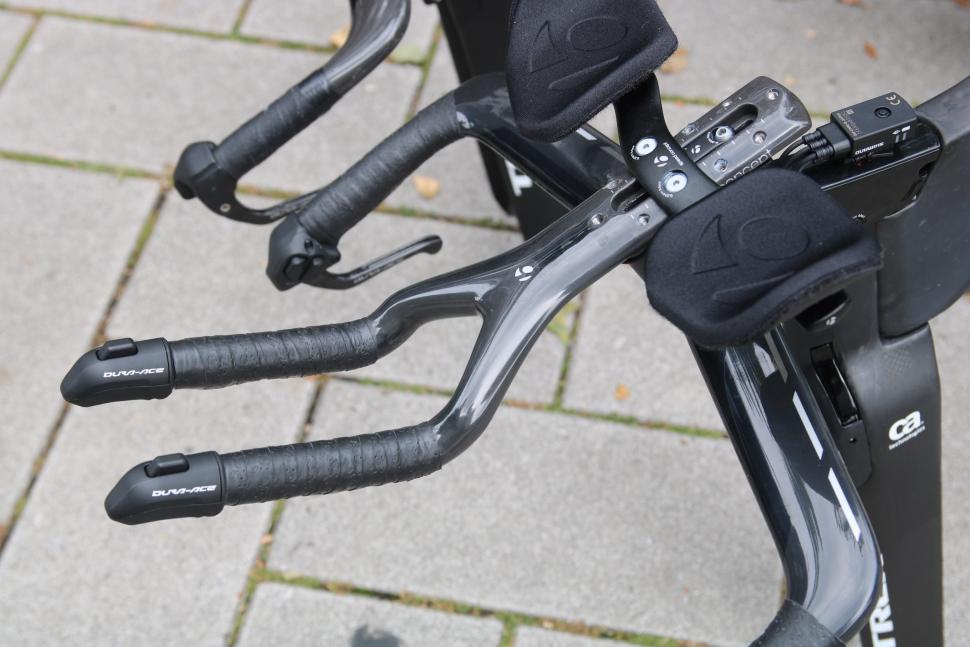
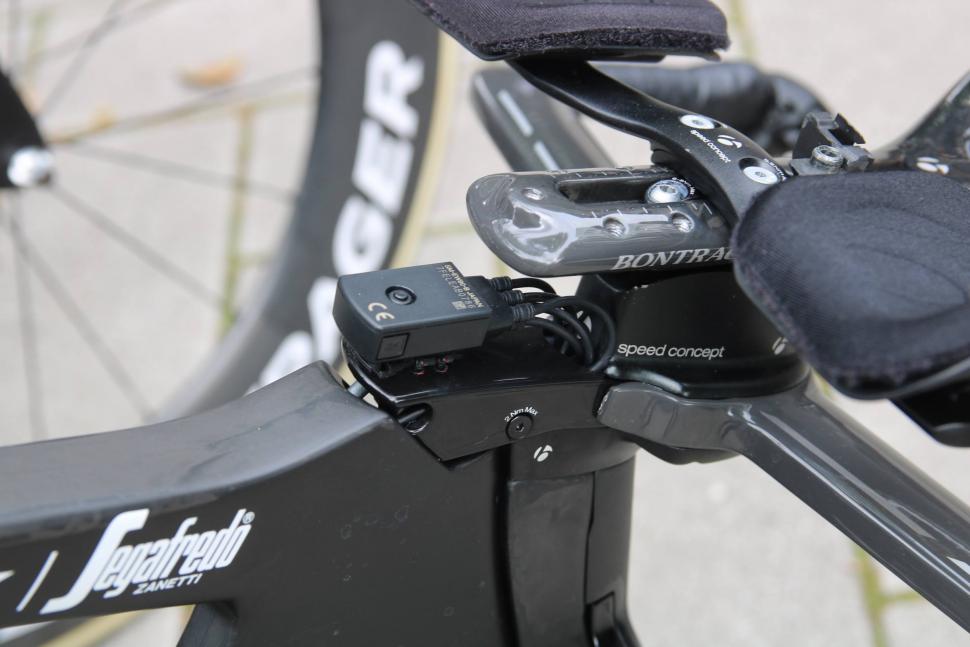
Add new comment
3 comments
Is there a rule requiring front derailleurs? As with RobD's comment, there's doen't seem to be much left to put a fairing on or improve aerodynamically. Removing the front derailleur, granny ring, crank spider and front shifter in one go seems obvious given that TTs are typically fairly flat. That must be at least 2 or 3 watts saved in drag, probably more at short TT speeds, and way more than the other very marginal gains the teams spend crazy money on.
Had wondered about this, given the reasoning for the use of disc rear wheels.
Are we getting close to the limits of TT bikes under the current rules? case in point, the 5 year old shiv (always wondered about that name) still looks pretty modern, they've all gone for maximum integration of forks etc, maybe in a year or two a rule change from the uci might shake things up a bit but I can't see how many large improvements can be made.